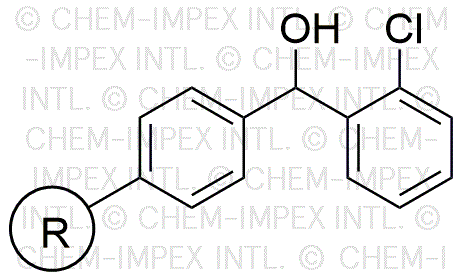2-Chlorodiphenylmethanol resin is widely utilized in research focused on:
- Chromatography: This resin serves as a stationary phase in chromatographic techniques, enhancing the separation of complex mixtures in analytical chemistry.
- Drug Delivery Systems: Its properties allow for the development of controlled release formulations, improving the efficacy and safety of pharmaceutical products.
- Polymer Composites: Used as a modifier in polymer formulations, it enhances mechanical properties and thermal stability, making it valuable in the automotive and aerospace industries.
- Environmental Remediation: The resin can be employed in the adsorption of pollutants from water and soil, providing an effective solution for environmental cleanup efforts.
- Research and Development: Its unique chemical structure makes it a useful tool in synthesizing new compounds, aiding researchers in developing innovative materials and pharmaceuticals.
General Information
Properties
Safety and Regulations
Applications
2-Chlorodiphenylmethanol resin is widely utilized in research focused on:
- Chromatography: This resin serves as a stationary phase in chromatographic techniques, enhancing the separation of complex mixtures in analytical chemistry.
- Drug Delivery Systems: Its properties allow for the development of controlled release formulations, improving the efficacy and safety of pharmaceutical products.
- Polymer Composites: Used as a modifier in polymer formulations, it enhances mechanical properties and thermal stability, making it valuable in the automotive and aerospace industries.
- Environmental Remediation: The resin can be employed in the adsorption of pollutants from water and soil, providing an effective solution for environmental cleanup efforts.
- Research and Development: Its unique chemical structure makes it a useful tool in synthesizing new compounds, aiding researchers in developing innovative materials and pharmaceuticals.
Documents
Safety Data Sheets (SDS)
The SDS provides comprehensive safety information on handling, storage, and disposal of the product.
Product Specification (PS)
The PS provides a comprehensive breakdown of the product’s properties, including chemical composition, physical state, purity, and storage requirements. It also details acceptable quality ranges and the product's intended applications.
Certificates of Analysis (COA)
Search for Certificates of Analysis (COA) by entering the products Lot Number. Lot and Batch Numbers can be found on a product’s label following the words ‘Lot’ or ‘Batch’.
*Catalog Number
*Lot Number
Certificates Of Origin (COO)
This COO confirms the country where the product was manufactured, and also details the materials and components used in it and whether it is derived from natural, synthetic, or other specific sources. This certificate may be required for customs, trade, and regulatory compliance.
*Catalog Number
*Lot Number
Safety Data Sheets (SDS)
The SDS provides comprehensive safety information on handling, storage, and disposal of the product.
DownloadProduct Specification (PS)
The PS provides a comprehensive breakdown of the product’s properties, including chemical composition, physical state, purity, and storage requirements. It also details acceptable quality ranges and the product's intended applications.
DownloadCertificates of Analysis (COA)
Search for Certificates of Analysis (COA) by entering the products Lot Number. Lot and Batch Numbers can be found on a product’s label following the words ‘Lot’ or ‘Batch’.
*Catalog Number
*Lot Number
Certificates Of Origin (COO)
This COO confirms the country where the product was manufactured, and also details the materials and components used in it and whether it is derived from natural, synthetic, or other specific sources. This certificate may be required for customs, trade, and regulatory compliance.


